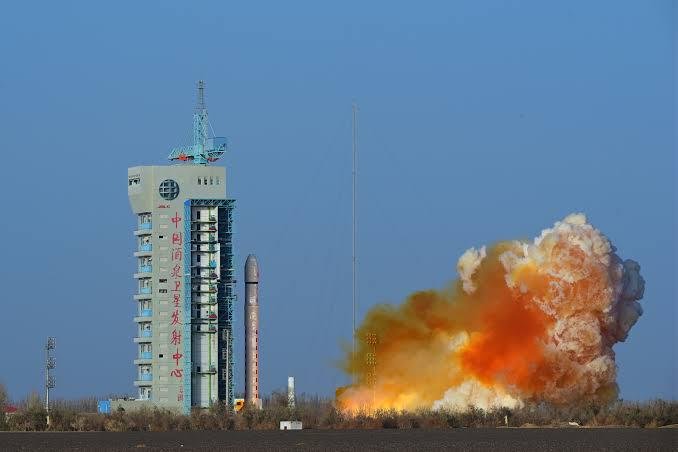On the evening of March 15, 2023, China launched a new experiment satellite into space from the Jiuquan Satellite Launch Center in northwest China. The successful launch of this satellite represents China’s ongoing efforts to expand its space exploration and research capabilities. This new satellite will likely contribute to the advancement of scientific research and technological development in China, as well as further strengthen China’s position as a leading player in the global space industry.
The launch of this satellite also has important implications for Chinese society. Firstly, it highlights China’s continued investment in science and technology, which has been a key priority for the country’s leadership in recent years. The Chinese government has made significant investments in science and technology research and development, and this launch demonstrates the results of these efforts. Additionally, it underscores the country’s ambition to become a major player in the global space industry, and its commitment to advancing the frontiers of human knowledge.
Furthermore, the launch of this new satellite could have wider implications for Chinese society. As the country continues to invest in science and technology, it may lead to the creation of new industries and job opportunities, as well as improved standards of living for Chinese citizens. Additionally, the development of China’s space industry could also have important strategic and diplomatic implications, as it may allow China to strengthen its relationships with other countries and expand its influence on the global stage. Overall, the successful launch of this new experiment satellite represents an important milestone for China and its ongoing efforts to advance its technological and scientific capabilities.
The launch was carried out using a Long March-11 carrier rocket, which is a solid-fueled rocket developed by the China Aerospace Science and Technology Corporation (CASC). The entire launch process involved several stages, including preparation, liftoff, separation, and orbit insertion.
The launch preparations began several days before liftoff, with engineers and technicians conducting a series of tests and checks to ensure that the rocket and satellite were functioning properly. The Long March-11 rocket was transported to the launch site and installed on the launch pad, where it was fueled and connected to the satellite. Once all the systems were checked and verified, the launch countdown began.
At 7:41 p.m. (Beijing Time), the rocket’s engines ignited, and it lifted off from the launch pad. The rocket ascended vertically for several seconds before beginning to pitch and roll, following a predetermined trajectory towards the desired orbit. The rocket’s first stage burned out and separated from the rocket after about two minutes, and the second stage ignited to continue the ascent.
Approximately six minutes after liftoff, the rocket’s second stage also burned out and separated, leaving the satellite in a temporary suborbital trajectory. The satellite then deployed its solar panels and communication antennas, and its onboard engines fired to begin the orbit insertion process. The satellite’s engines burned for several minutes, adjusting its velocity and trajectory to reach its final orbit.
The launch of the Shiyan-19 satellite involved complex and precise processes, requiring the collaboration of numerous experts and technologies. The successful launch and insertion of the satellite into its planned orbit represent a significant achievement for China’s space program and its ongoing efforts to advance its space exploration and research capabilities.
This satellite is expected to play a crucial role in land resource surveys, urban planning, disaster prevention and mitigation, and other critical missions. Its launch is a significant milestone for China’s space exploration and research efforts, further solidifying its position as a leader in the global space industry.
The Shiyan-19 satellite is equipped with state-of-the-art sensors and imaging technology that will allow for high-resolution land resource surveys. This will enable China to better understand and manage its vast and diverse natural resources, including forests, waterways, and agricultural land. The satellite’s data will be particularly useful in identifying areas that require conservation efforts or improvements in management practices, leading to more sustainable and effective land use.
In addition to land resource surveys, the satellite will also support urban planning initiatives in China. Its high-resolution imaging capabilities will allow urban planners to monitor and analyze the growth and development of cities, identifying areas that require improvements in infrastructure or public services. This information will be valuable for addressing issues such as traffic congestion, air pollution, and public health, leading to more livable and sustainable urban environments.
Another critical mission for the Shiyan-19 satellite is disaster prevention and mitigation. The satellite’s advanced sensors and imaging technology will provide real-time data on natural disasters such as earthquakes, floods, and wildfires, enabling early warning systems and rapid response efforts. This information will be essential in preventing or minimizing the impact of disasters and protecting lives and property.
The successful launch of the Shiyan-19 satellite marks the 467th flight mission of the Long March series rockets, a testament to China’s ongoing investment in space exploration and research. The Long March series rockets have been instrumental in China’s space program, having launched a wide range of satellites and spacecraft into orbit since the 1970s. The continued development of these rockets and the launch of advanced satellites like the Shiyan-19 demonstrate China’s commitment to advancing its technological and scientific capabilities and achieving new milestones in space exploration.
Overall, the Shiyan-19 satellite represents a significant technological achievement for China and its space program. Its advanced imaging technology and sensors will enable critical missions in land resource surveys, urban planning, disaster prevention and mitigation, and other areas. The data and information it provides will be instrumental in addressing some of China’s most pressing challenges, leading to more sustainable and livable communities and a better quality of life for its citizens.
Read More:
